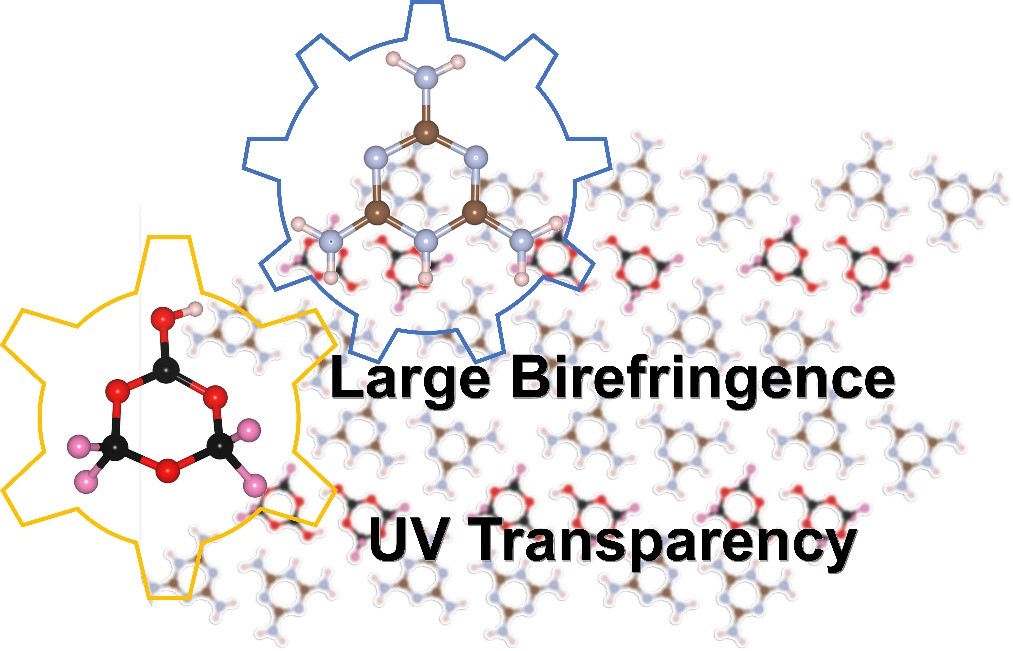Researchers discovery a new hybrid birefringent crystal with strong optical anisotropy
Editor: | Sep 07,2022
Birefringent materials, which enable the splitting of incident light into two refraction rays, can modulate and control the polarization of light. For this purpose, commercialized birefringent materials represented by CaCO3, MgF2, TiO2, a-BaB2O4, etc. play an active role in optical communications and related laser-driven industries. Nowadays, birefringent materials are being developed towards the aim of finding candidates with large birefringence, especially for short-wavelength ultraviolet (UV) applications. However, the discovery of hybrid crystals with strong optical anisotropy in the short-wavelength UV spectral region is extremely limited. Generally speaking, birefringence, defined as the maximal difference among the refractive indices of a specific compound, depends on the chemical composition and arrangement of functional units in the lattice. In order to achieve a large birefringence, several approaches corresponding to the modification of cationic and anionic units have proved to be effective. It is very efficient to design birefringent crystals by combining one or more of the aforementioned birefringence-active units into one structure.
Recently, a research group led by Prof. Shilie Pan at Xinjiang Technical Institute of Physics & Chemistry, Chinese Academy of Science, synthesized a new hybrid birefringent crystal with strong optical anisotropy by following the design strategy of assembling mixed functional modules. As a result, a new semiorganic fluorooxoborate with the formula [C3N6H7]2[B3O3F4(OH)] was obtained and subjected to performance characterization, covering theoretical and experimental studies. A combination of the large birefringence (0.440@546 nm) and short absorption edge (240 nm) makes [C3N6H7]2[B3O3F4(OH)] a potential birefringent crystal applicable in the UV spectral region. Theoretical calculations based on real-space atom-cutting and response electron distribution anisotropy methods indicate that both the [C3N6H7] cation and [B3O3F4(OH)] anion in MelBF are birefringence-active. They do believe that this discovery might provide new routes for the exploration of UV birefringent crystals in organic-inorganic hybrid systems.
The paper was published on J. Mater. Chem. C, 2022, 10, 6590–6595 with the title of “[C3N6H7]2[B3O3F4(OH)]: a new hybrid birefringent crystal with strong optical anisotropy induced by mixed functional units”. This work was financially supported by National Key R&D Program of China, Young Elite Scientist Sponsorship Program by CAST, National Natural Science Foundation of China, and the West Light Foundation of CAS.
Article: https://pubs.rsc.org/en/content/articlelanding/2022/tc/d2tc01123a

Figure. The diagram of design strategy for this hybrid birefringent crystal
附件下载:
 (86) 991-3838931
(86) 991-3838931 lhskj@ms.xjb.ac.cn
lhskj@ms.xjb.ac.cn (86)991-3838957
(86)991-3838957 40-1 Beijing Road
Urumqi, XinjiangChina
40-1 Beijing Road
Urumqi, XinjiangChina